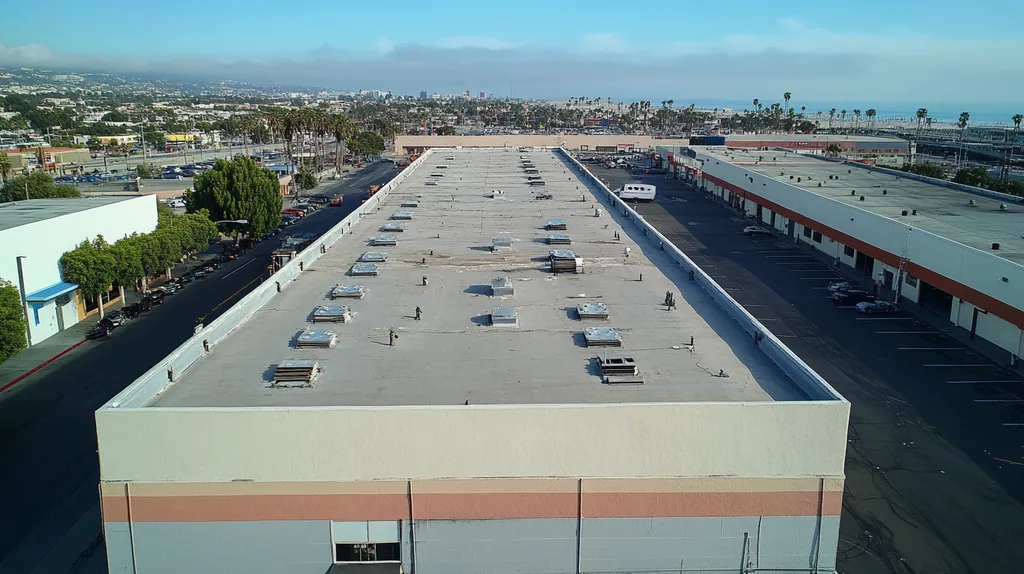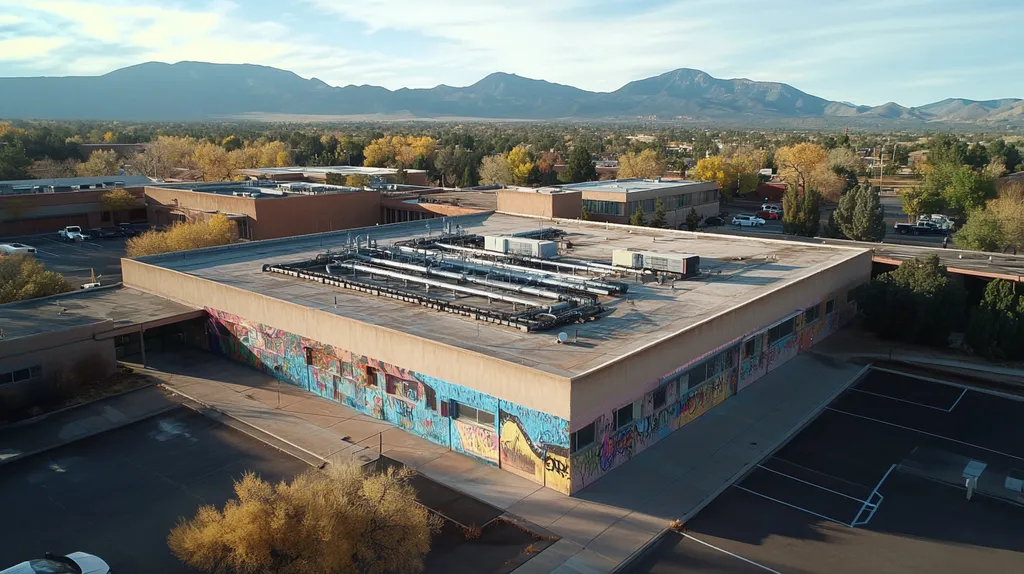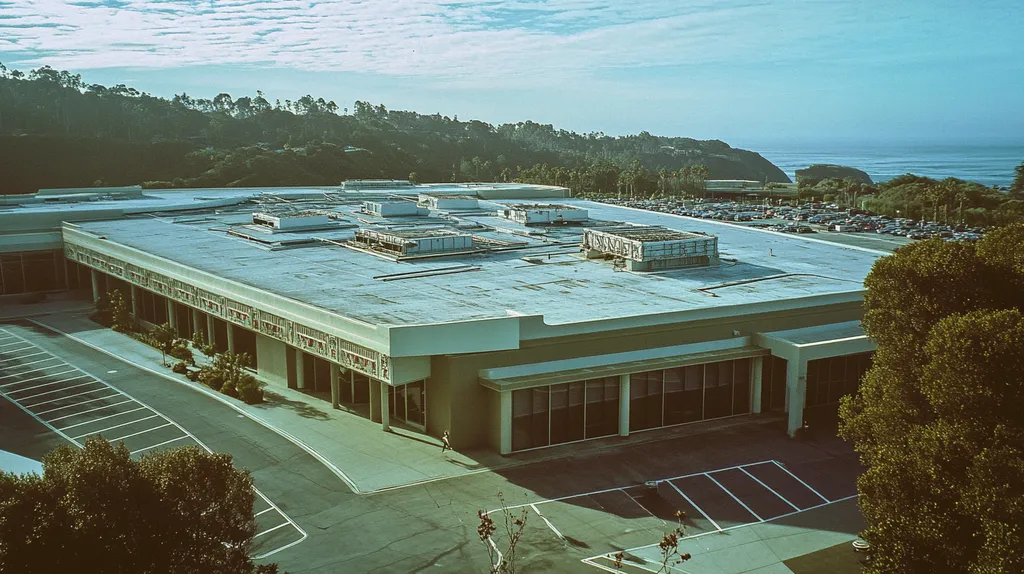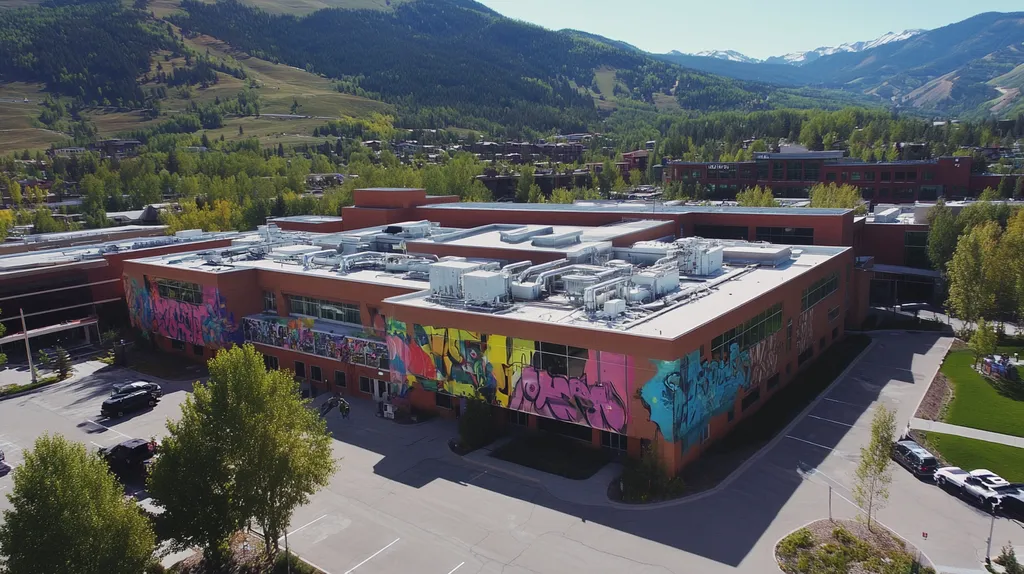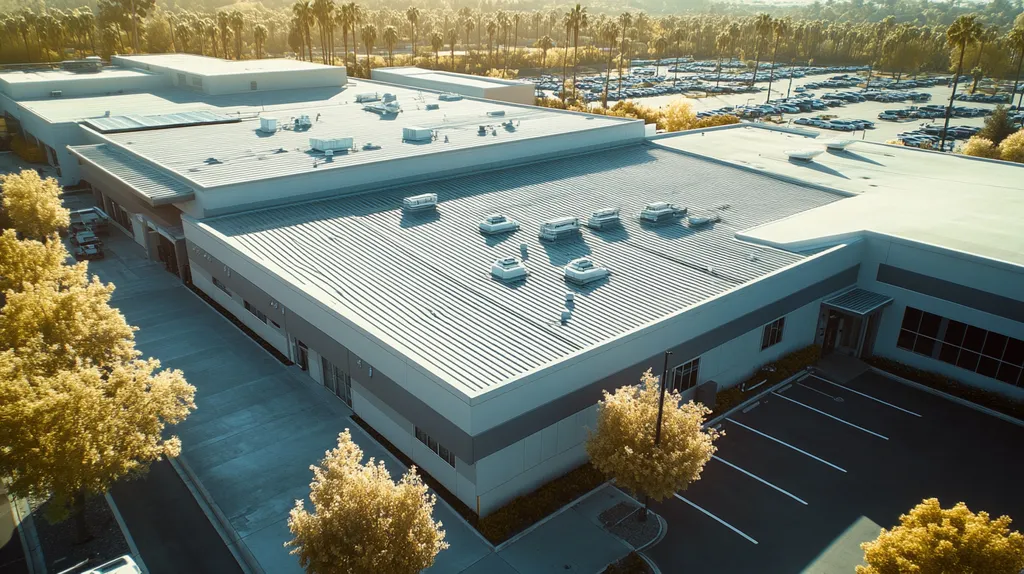In the evolving landscape of commercial roofing, misconceptions about combustible materials continue to pose severe risks to property and life. Recent data from the National Fire Protection Association reveals that roofing-related fires caused over $1.2 billion in damages last year alone.
From outdated beliefs about material flammability to dangerous oversights in HVAC maintenance, these industry myths perpetuate vulnerabilities across thousands of commercial properties nationwide.
This comprehensive analysis examines the real-world implications of common roofing misconceptions, exploring evidence-based solutions that protect both assets and occupants while meeting modern safety standards.
SECTION 1: COMMON MISCONCEPTIONS
Commercial roof safety often hangs in the balance due to widespread misconceptions about combustible materials. Neglecting the flammability of roofing components, dismissing the fire risks from HVAC systems, and downplaying the dangers posed by lightning strikes can lead to devastating consequences. To illustrate, the National Fire Protection Association reveals that roofing materials are responsible for approximately 15% of commercial building fires. It’s crucial to address these myths to create a safer environment for all commercial properties.
Ignoring Roof Material Flammability
A prevalent misconception is the belief that all roofing materials possess equal fire resistance. In fact, the flammability of roofing components varies widely. Many property owners mistakenly assume that their roofing systems can withstand any fire threat, inadvertently putting their properties at risk.
For instance, while metal or synthetic materials generally offer superior fire resistance, certain asphalt-based roofing systems can ignite more easily. This distinction becomes particularly critical in regions vulnerable to wildfires or industrial sparks. Failing to understand material safety ratings can lead property owners to select dangerously flammable options.
Building codes provide essential guidance on fire-rated materials, yet misinterpretation can occur. Staying informed about the latest regulations is essential for making smart choices regarding roof material safety. Property owners should regularly consult ASTM fire ratings for roofing materials to avoid potentially hazardous mistakes.
Ultimately, recognizing the varying fire-resistant qualities of roofing materials is vital for protecting commercial buildings. Contractors play a key role by educating property owners on selecting appropriately rated materials to mitigate risks effectively.
Overlooking HVAC Fire Hazards
Another serious misconception is that HVAC systems are isolated from the roof and present no fire hazards. In reality, these systems can easily become ignition sources if not properly maintained or installed, creating substantial safety risks. For example, combustibles near HVAC units can catch fire, especially in commercial environments where these systems operate continuously.
Common issues like overheating motors and electrical malfunctions can spark flames. Regular inspections are critical, as neglecting maintenance leaves vulnerabilities that could lead to disaster. Often, these hazards go unnoticed until significant damage ensues.
Moreover, incorrect duct installation or inadequate insulation can trap heat in roofing systems, exacerbating fire risks. Without proactive measures like the installation of barriers and routine checks, these dangers only escalate. Comprehensive fire prevention strategies should include HVAC maintenance aligned with fire safety protocols.
Addressing the fire hazards associated with HVAC systems is essential for a holistic safety program. Facility managers must prioritize education around these systems and ensure compliance with fire safety regulations to minimize risks effectively.
Underestimating Lightning Strike Risks
The dangers of lightning strikes are frequently underestimated in the context of roof safety. Many property owners fail to recognize that such strikes are not too uncommon to ignore within their roofing strategy. Statistics reveal that millions of dollars in damages occur each year due to fires ignited by lightning.
Insufficient lightning protection systems expose roofs to ignition risks during storms. Without effective grounding systems, the electrical energy from a lightning strike can travel through a building, igniting combustible materials on the roof. The aftermath can be tragic, leading to significant fire damage and loss of assets.
Particularly, structures with taller profiles—such as high-rises—are at increased risk. Installing robust lightning protection systems can channel electrical surges safely into the ground, thereby reducing fire risks. The National Fire Protection Association emphasizes that all commercial properties should integrate lightning protection into their fire safety planning.
In conclusion, addressing the dangers associated with lightning strikes is imperative for maintaining roof safety. Property owners must remain vigilant about this threat when designing or renovating roofing systems to ensure comprehensive long-term protection.
SECTION 2: PRACTICAL IMPLICATIONS
The presence of combustible materials on commercial roofs is not merely a concern; it is a critical safety risk that requires urgent attention. Each year, nearly 1,500 commercial building fires are reported in the United States, resulting in over $90 billion in property damage. Understanding how these materials can accelerate fire spread is essential for property owners and facility managers. They face implications that ripple through property value, business operations, and the safety of occupants. This section delves into these pressing issues to support informed decision-making.
Fire Spread and Property Damage
Combustible materials, such as certain insulation types and roofing membranes, can significantly accelerate fire spread across a roof. When ignited, these materials can create a fire ladder effect, enabling flames to leap from one area of the roof to another with alarming speed. This swiftness not only poses a threat to the integrity of the building but also increases the likelihood of extensive property damage, leading to costly repairs.
Moreover, roofing materials invariably interact with environmental factors, especially in dry, windy conditions. Under such circumstances, the risk of fire spreading can escalate dramatically. This amplifies the burden on emergency response teams, who may find themselves overwhelmed in the event of a fire on a commercial roof.
Long-term exposure to fire threats can also erode property value. Frequent fire incidents can lead to increased insurance premiums, and potential tenants are less likely to consider leasing space in a building with a history of fire hazards. Therefore, property owners must actively prioritize fire safety when choosing roofing materials, focusing on options that enhance safety while protecting their financial investment.
Asset Protection and Business Continuity
Harmonizing safety with business continuity is essential for commercial property owners. A fire caused by combustible roofing materials can disrupt operations to a severe extent. An incident can lead to prolonged downtime while repairs are conducted, which may result in substantial loss of revenue and damage to customer relationships.
This disruption isn’t confined to one property. A single fire incident may ripple through a network of suppliers and partners, creating challenges for regional businesses and threatening overall economic stability.
Investing in fire-resistant roofing materials transcends mere safety; it serves as a strategic financial safeguard. Through proactive measures, property owners can protect their operations from devastating fire incidents and ensure long-term viability.
Ultimately, responsible roofing practices contribute to asset protection, fostering resilience amid emergencies. Such reliability can enhance a property’s appeal to tenants and investors, further bolstering its market value.
Occupant Safety and Emergency Response
Occupant safety stands at the forefront when tackling the risks from combustible materials. In a fire emergency, time is of the essence. The speed at which flames spread from combustible roofing materials can significantly impact evacuation protocols and overall safety measures.
The choice of roofing materials plays an essential role in how effectively emergency responses can be executed. Materials that ignite can create toxic smoke that threatens lives long before flames reach occupants. This reality underscores the necessity of thorough fire safety planning, including clear evacuation routes and robust responses to fire alarms.
Furthermore, collaboration with local fire departments is crucial for facilities managers. Training and preparedness drills can significantly improve responses during emergencies, enhancing occupant safety and minimizing risks associated with combustible materials.
In summary, prioritizing non-combustible or fire-resistant materials on roofs is vital—not just for regulatory compliance, but also for safeguarding the well-being of all occupants. A proactive approach can save lives and mitigate the devastating aftermath of fire incidents.
SECTION 3: COST OF MISINFORMATION
Understanding the cost of misinformation surrounding combustible materials in roofing is essential for commercial property owners. The financial impact of fire-related damage can be staggering, with U.S. fire departments responding to over 1.3 million fires in 2020 alone, leading to billions in losses. Misguided beliefs about roof safety not only endanger lives but can also result in severe economic fallout that jeopardizes the future of businesses.
Financial Losses from Fire Damage
Fire damage can inflict significant financial burdens on commercial properties, often exceeding initial cost estimates. When combustible materials are integrated into roof assemblies, rebuilding expenses can escalate rapidly. In many cases, the costs of repairing fire damage can reach hundreds of thousands of dollars, depending on the severity and type of materials involved.
Furthermore, property owners must also account for the expenses associated with replacing damaged inventory, equipment, and specialized facilities. Prolonged repair periods can lead to additional costs, such as those incurred while relocating operations temporarily. It’s critical to recognize that these financial risks extend far beyond the immediate aftermath of a fire.
Insurance premiums typically rise following claims from fire incidents. Property owners who misjudge the dangers of combustible materials may find their costs escalating over time due to increased premiums. Understanding the importance of non-combustible materials can safeguard investments and enhance financial stability in commercial properties.
Business Interruption and Downtime
Fires in commercial buildings frequently result in catastrophic downtime, severely disrupting business operations. Each day of interruption translates into lost revenue and diminished trust from customers. The longer a business remains sidelined, the greater the impact on productivity and core activities.
Most businesses rely on consistent operations to fulfill contractual commitments. A fire can halt inventory flows and delay important projects, resulting in lost contracts and dissatisfied clients. This ripple effect can weaken a company’s position in an already competitive marketplace.
The financial toll of downtime can be substantial, often reaching tens of thousands of dollars per day. Ignoring the potential for fire damage compromises not only the physical structure but also affects the profitability and sustainability of the business. Proactively addressing fire risks is essential for maintaining operational continuity.
Additionally, a company’s reputation can suffer due to recurring safety issues. Clients and partners may hesitate to engage with organizations known for disruptive incidents. Preventing fire risks through proper roofing practices is crucial for retaining business stability and market confidence.
Legal and Regulatory Consequences
Overlooking the risks associated with combustible materials can expose property owners to significant legal and regulatory ramifications. Local fire codes and building standards often mandate specific fire safety protocols, including the use of non-combustible roofing materials. Falling short of these requirements can result in hefty fines and legal troubles.
In the wake of a fire, investigations often assess compliance with safety regulations. Property owners who have neglected best practices may face lawsuits from affected employees and their families, leading to devastating financial liabilities that far exceed compliance costs.
Moreover, insurers may deny claims if a property is found to violate safety codes during an incident. This gap often leaves owners to bear the brunt of recovery expenses entirely. Thus, understanding and adhering to regulations is vital for property owners to avoid complications down the line.
By staying informed about local fire safety guidelines, property owners not only protect their investments but also shield themselves from arduous legal challenges. By addressing the misinformation surrounding combustible materials, businesses can foster safer environments while mitigating these risks.
SECTION 4: REALITY CHECK
The stakes of roof safety are now more critical than ever for commercial properties. A striking report from the National Fire Protection Association reveals that nearly 45% of building fires begin with issues related to roofing materials. This highlights the necessity of making well-informed decisions regarding roofing choices; doing so can not only save lives but also protect substantial investments. This section examines fire-resistant roofing materials, the necessity of routine inspections, and the integral role of fire suppression systems.
Fire-Resistant Roofing Material Options
Selecting appropriate fire-resistant roofing materials is pivotal for enhancing safety in commercial buildings. Options like Modified Bitumen, EPDM, and TPO exhibit varying levels of fire resistance, providing excellent solutions for mitigating fire risks. For example, Class A fire-rated materials withstand severe fire exposure, significantly lowering the odds of ignition.
Metal roofing is another viable choice, known for its inherent fire-resistant qualities and impressive longevity. Property owners should ensure that any materials they consider align with local fire codes and standards. Consulting with manufacturers can clarify the fire ratings and safety features essential for compliance.
In certain jurisdictions, building codes may mandate the use of specific fire-safe materials to uphold safety regulations. By complying with these standards, property owners can enhance safety and potentially secure better insurance rates. Fire-resistant materials can also lead to long-term financial advantages due to their durability.
Ultimately, making informed decisions on roof materials goes beyond just meeting regulations; it fosters a safer environment for all building occupants. The right choices can safeguard lives and protect valuable investments.
Importance of Regular Roof Inspections
Regular roof inspections are often underestimated but play a crucial role in fire safety. Evidence indicates that numerous roofing failures stem from inadequate maintenance, which heightens vulnerability to fire hazards. Inspections are instrumental in spotting potential risks before they escalate into serious issues.
Thorough inspections can reveal deteriorating materials, debris accumulation, and compromised flashing—all items that can easily ignite and accelerate fire spread. Hiring professional inspectors allows property owners to gain valuable insights about roof conditions and required repairs.
By establishing a routine inspection schedule, property owners can adopt a proactive maintenance strategy. This diligence not only extends the lifespan of the roof but also boosts safety levels, preventing significant issues arising from hidden damage. Furthermore, timely inspections ensure compliance with updated fire safety standards.
Integrating regular inspections into the overall maintenance plan underscores a commitment to fire safety. This active approach protects the physical structure and fosters peace of mind for employees and visitors alike.
Role of Fire Suppression Systems
Fire suppression systems play an essential role in bolstering safety in commercial roofing. While the presence of fire-resistant materials is critical, having a dependable fire suppression system is vital for minimizing damage. Features like sprinklers and fire extinguishers enhance emergency response effectiveness.
Automatic sprinkler systems act swiftly to extinguish flames before they spread, drastically reducing potential property loss. Moreover, fire alarms and detection systems provide early warnings, enabling timely evacuation and firefighting actions.
Integrating fire suppression technologies with roofing systems creates a comprehensive safety strategy. Increasingly, commercial buildings are utilizing smart technologies that monitor both roof conditions and fire risks in real time.
Investing in fire suppression is not just about fulfilling safety regulations; it serves as a strategic risk management tool. These systems can be lifesavers, ensuring the continuity of operations and safeguarding vital assets from fire-related disasters.
SECTION 5: EVIDENCE-BASED ALTERNATIVES
As the urgency for improved fire safety becomes paramount, property owners must rethink their roofing materials to enhance both safety and durability. With nearly 40% of commercial structure fires attributable to roof-related causes, selecting the right roofing system is critical. This section explores innovative, evidence-backed alternatives to traditional roofing materials that can effectively reduce fire risks while preserving structural integrity.
Metal Roofing for Fire Resistance
Metal roofing emerges as a leading option for fire resistance in commercial settings. Its non-combustible properties make it exceptionally effective at preventing flames from spreading, significantly reducing the risk of catastrophic fires. Research indicates that metal roofs can endure high temperatures without losing their structural integrity.
Most metal roofs boast a Class A fire rating, the highest standard available. This feature is particularly advantageous for facilities housing flammable materials or equipment. By investing in metal roofing, property owners not only bolster safety but may also enjoy lower insurance premiums due to diminished risk.
Furthermore, metal roofs often lead to lower lifetime costs because of their durability. They can also enhance energy efficiency, as many systems are designed to reflect heat, resulting in additional savings.
Incorporating metal roofing solutions into fire safety strategies is essential for any commercial facility aiming to minimize risks. A heightened awareness of these materials can drive industry standards toward improved fire protection.
Modified Bitumen and Built-Up Roofing
Modified bitumen and built-up roofing systems present excellent options for fire resistance in commercial applications. Comprising asphalt and other modifiers, these materials enhance fire retardancy, creating surfaces that resist ignition during a fire event.
Modified bitumen roofing often earns a Class A fire rating and can incorporate fire-resistant granules. Similarly, built-up roofing features multiple layers that absorb heat and delay flames from penetrating the material. This characteristic is vital for thwarting the spread of fires from roofs to occupants or neighboring structures.
These roofing types also offer added insulation, promoting energy efficiency while enhancing protective features. Transitioning to modified bitumen or built-up roofing systems equips facilities with heightened levels of fire safety and resilience.
Adopting these materials reflects a proactive commitment to safety. As fire safety regulations evolve, leveraging such measures can position a facility as a leader in compliance and reliability.
TPO Roofing with Fire Retardants
Thermoplastic Olefin (TPO) roofing systems are increasingly recognized for their blend of performance and safety attributes. TPO can be fortified with fire retardants, substantially boosting its resistance to flames and heat. This adaptability makes it suitable across various commercial applications, especially where fire safety is a priority.
Recent advancements have led to TPO products that meet rigorous fire safety codes, allowing property owners to install these roofs without compromising safety standards. Proper insulation paired with TPO roofs effectively mitigates fire risks while maintaining a lightweight profile.
One significant advantage of TPO roofing is its energy efficiency, as it reflects sunlight and reduces cooling costs—benefiting long-term economic performance. Additionally, TPO systems are typically quick to install, resulting in minimal disruption to business operations during the replacement process.
Highlighting TPO roofing with fire retardants reshapes perceptions within the industry regarding acceptable fire safety measures. Property owners should consider this innovative option as an integral part of their roofing strategy to enhance both safety and overall value.
SECTION 6: TEST AND VERIFY
The importance of regular testing and verification for commercial roof safety cannot be overstated, especially when it comes to combustible materials. Alarming statistics indicate that over 60% of commercial building fires originate from issues related to roofing materials. These figures highlight the urgent need for thorough inspections and proactive safety measures that can protect properties and lives. This section emphasizes the critical role of conducting regular roof inspections, implementing fire safety protocols, and testing fire suppression systems.
Conducting Regular Roof Inspections
Regular inspections are essential for identifying and reducing risks linked to combustible materials on commercial roofs. Too often, property owners overlook the need for consistent assessments, allowing hidden dangers to grow unchecked. Comprehensive inspections can uncover issues like deteriorating materials, debris accumulation, and weakened structures.
Experts advocate for a minimum of two inspections per year, timed with changing seasons that could affect the roof’s integrity. During these inspections, trained professionals should evaluate not only the roof’s condition but also assess for any flammable materials that could pose a threat.
Implementing a proactive approach involves documenting inspection findings and developing a maintenance plan based on those results. By addressing potential problems early, property managers can significantly diminish fire hazards linked to their roofs.
Additionally, establishing a routine inspection schedule helps ensure compliance with local building codes and insurance requirements, potentially lowering premiums. Investing in regular assessments ultimately represents a commitment to safety, security, and long-term financial savings.
Implementing Fire Safety Protocols
Creating comprehensive fire safety protocols is indispensable for protecting roofs from combustible materials. Many organizations fail to recognize the value of a well-crafted fire safety policy, leaving them exposed to accidents and legal liabilities. Effective fire safety begins with training staff on fire prevention tactics and appropriate handling of combustible substances.
Incorporating fire-resistant materials into roof designs is a proactive strategy that can significantly reduce fire impact. Clear guidelines for the safe storage and handling of heat-sensitive materials are equally important to prevent ignitions.
Regular training sessions for employees reinforce understanding of specific risks and emergency procedures. Moreover, having signage and informational resources throughout facilities can bolster safety awareness.
Fostering a culture of fire safety within the organization nurtures vigilance that can thwart minor issues from escalating into severe disasters. The costs tied to proper training and protocol implementation pale in comparison to the potential losses from a severe fire incident.
Testing Fire Suppression and Lightning Protection Systems
Routine testing of fire suppression and lightning protection systems is a critical component of maintaining roof safety, especially in buildings prone to combustible materials. Fire suppression systems should undergo regular checks to ensure they will operate effectively in emergencies; studies reveal that as many as 30% of these systems may fail due to insufficient maintenance.
Implementing a rigorous testing schedule allows for early detection of issues before any fire event occurs. Facility managers must ensure that components like sprinklers and alarms are functioning appropriately. Consistent assessments also help verify compliance with safety regulations and industry standards.
Lightning protection systems should likewise be evaluated regularly to prevent roof fires caused by lightning strikes. Regular inspections help guarantee that these systems effectively redirect electrical currents away from combustible materials, thereby reducing fire risk.
Incorporating testing and inspection into a routine maintenance plan significantly enhances the overall resilience of commercial structures. This proactive stance not only protects buildings but also ensures the safety of all occupants.
Looking Ahead
The devastating toll of commercial roof fires continues to climb, with over $1.2 billion in annual damages serving as a stark reminder of the risks posed by combustible materials.
As building technologies advance, the industry must shed outdated assumptions about material flammability that compromise safety and security.
The evidence clearly demonstrates that investing in fire-resistant roofing materials, maintaining rigorous inspection protocols, and implementing comprehensive fire suppression systems can dramatically reduce catastrophic losses.
With proper education and adherence to modern safety standards, property owners can protect their assets while ensuring occupant safety through evidence-based roofing choices.
The cost of inaction far exceeds the investment required for fire-safe roofing – the time for change is now.
FREQUENTLY ASKED QUESTIONS
Q. What misconceptions exist about commercial roof flammability?
A. Many believe all roofing materials share equal fire resistance, which is untrue. Certain materials, like asphalt, can ignite easily, while others like metal offer better safety. Misunderstanding material ratings can lead to poor choices, increasing fire risk for properties.
Q. How do combustible materials affect commercial roof safety?
A. Combustible materials can significantly heighten fire risks, jeopardizing safety and property value. They allow fires to spread rapidly across roofs, leading to devastating damages. Informed choices about roofing materials are crucial for enhancing safety and minimizing such risks.
Q. What financial impacts can arise from fire damage on an industrial roof?
A. Fire damage can lead to substantial financial losses, often beyond initial estimates. Costs can include repairs, replacing inventory, and significant downtime. Ignoring fire risks may result in increased insurance premiums and long-term financial instability.
Q. How can property owners ensure roof safety against fires?
A. Selecting fire-resistant roofing materials is essential for enhancing safety. Regular inspections and implementing effective fire safety protocols help identify and mitigate risks early. These practices protect lives and investments within commercial properties while complying with safety regulations.
Q. What are the best fire-resistant roofing materials available?
A. Options like metal roofing, Modified Bitumen, and TPO are recognized for their fire-resistant properties. Each can significantly enhance safety in commercial applications by delaying ignition and preventing fire spread, helping to protect occupants and buildings.
Q. Why are regular roof inspections vital for industrial roofs?
A. Regular inspections identify issues like wear or debris that can lead to fire hazards. They ensure compliance with safety standards while promoting proactive maintenance, which protects the property and maximizes the lifespan of the roofing system.
Q. How can fire suppression systems enhance commercial roof safety?
A. Fire suppression systems act quickly to extinguish flames before they spread. Features like sprinklers and alarms provide early warnings, improving emergency response. Such systems form a crucial part of a comprehensive fire safety strategy for commercial properties.
Q. What emerging roofing technologies can improve safety?
A. Innovative materials like TPO with fire retardants and smart monitoring systems are emerging. These technologies enhance fire safety while improving energy efficiency. Adopting such advancements can position properties as leaders in safety and sustainability within the industry.

